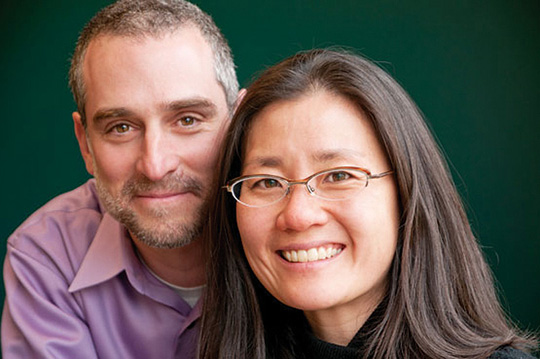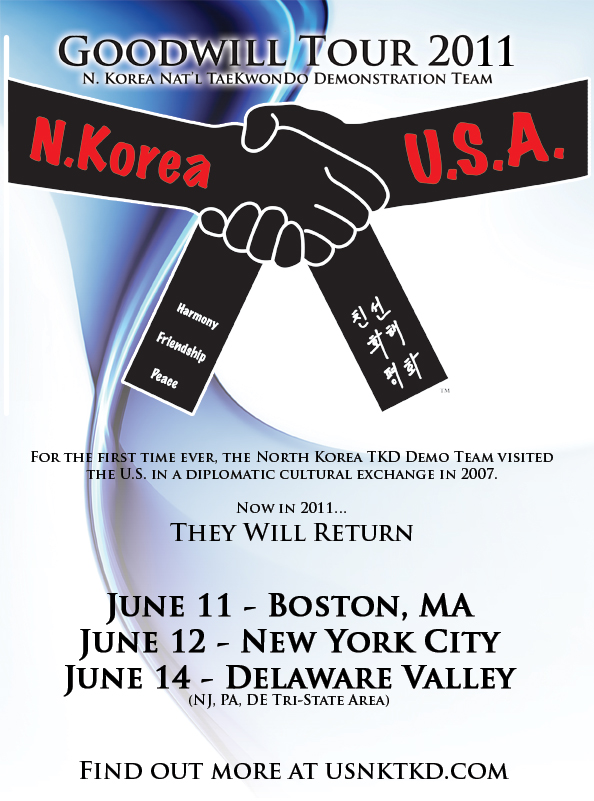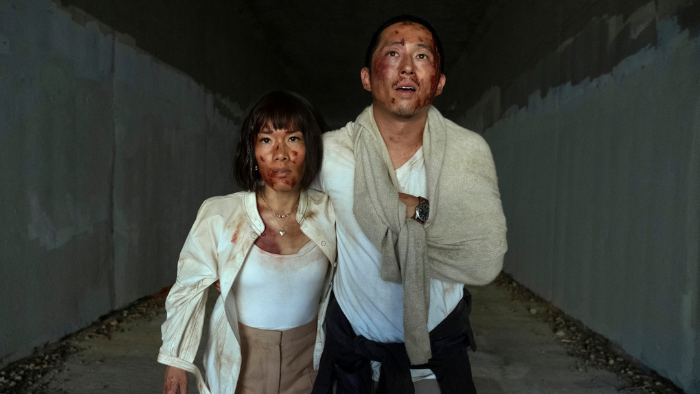
Katherine Kim and Benjamin Levy, pictured here with their children, were among the 37 couples interviewed for a study on Asian-Jewish marriages.
TO HAVE AND TO HOLD
A new study explores the prevalence of Asian-Jewish coupling.
by Kathy Seal
“Was it the accumulation of Asian-Jewish wedding announcements in the New York Times Sunday Style section?” mused Noah Leavitt. “Yet another quip about spending Christmas at a Chinese restaurant?”
The Whitman College sociologist can’t pinpoint precisely what led him and wife Helen Kim, also a sociologist at the Walla Walla, Wash., school, to launch a study about Asian-Jewish marriages.
“But at some point, we were struck by how many people in our extended social network fit this demographic,” continued Leavitt. And since they were starting a family, he and Kim were intrigued by the meaning of their combined backgrounds for their child.
[ad#300]
So two years ago, the married scholars decided to study a topic very close to home. They interviewed 37 couples from across the country in which one of the partners is Asian and the other Jewish. From an initial group of 300 couples who had responded to an online survey, the sociologists chose those who would represent the broadest possible range of Asian-Jewish households. They included Asian men married to Jewish women, Jewish men married to Asian women and gay couples.
Some were newlyweds, and others had married “illegally,” before the Supreme Court declared state miscegenation laws unconstitutional in 1967. While most of the Jews were Ashkenazim, the Asians’ origins included Korean, Chinese, Filipino, Japanese, and Southeast and South Asian. All of the couples hailed from New York City, Philadelphia, or Northern or Southern California, and most had children.
“While much attention has focused on interfaith marriages between American Jews and their non-Jewish spouses, we know very little about marriages of racially and ethnically diverse couples where there is at least one Jewish partner,” said Leavitt. “There is a dearth of information about Asian-Jewish families. Our project aims to fill this gap.”
Kim, married to Leavitt for eight years, also acknowledged a personal motive for the research: the desire to more deeply understand how their own relationship works. The couple is continuing on this research path, interviewing the children of these couples for another study. “We’re going to look at how they’ve navigated their different backgrounds,” Kim said. “Some kids may look totally Asian. Some kids may look totally white. So for all these kids, how does race interact with their identity?”
[ad#336]
Last month, the scholars talked with KoreAm about their study’s findings, including some surprises, as well as its impact on their own lives.
How do the couples you studied cope with their cultural differences?
Leavitt: A few people said they didn’t really think about differences in their cultural backgrounds, but I’d say most people put a lot of mental energy into paying attention to what it might mean for [issues] such as how they raise their kids.
How do they deal with the way others perceive Asian-Jewish marriages?
Kim: These couples were incredibly loving. Odds are in a society that is not blind to race—and even if you live in San Francisco or L.A. where we see lots of mixed couples—there’s still a general perception that this is kind of weird. To be committed to work through that, even if not on a conscious level, is an expression that “my love for my partner is strong enough that we’re going to be able to weather anything.”
What did you find important to the Asian members of these couples?
Kim: First and foremost, both partners talked about a similarity in values—an emphasis on education, close-knit families and hard work. [But] even though couples often talked about the similarities in their values, on a fundamental level, [most said,] “I’m together with my spouse because we’re individuals. I fell in love with him for individual, as well as maybe for cultural, reasons.” [Personally,] I’ve experienced people saying, “You’re probably with your husband because you’re similar—hard-working and well-educated.”
Why I was drawn to my husband in the first place had nothing to do with that. You can be as well-educated as you want, but when it comes to the highs and lows of a relationship, you’ve got to be on board as individuals.

How do the families incorporate Asian culture?
Kim: The emphasis on food is a big deal. I think people feel it’s a very real link to their heritage. For a non-Asian Jewish partner to be into eating kimchi makes the Korean partner feel comfortable, that he or she doesn’t have to explain that aspect of their identity.
Maintaining contact with the family of origin is also important, especially for second-generation folks. That’s true for me. My parents wanted me to assimilate as quickly as possible, so I don’t have the skills to connect my child to the [Korean] culture. For that, I rely on my mother. For example, I didn’t do the first birthday dol celebration growing up. So we went to my mom to find out what to do for my son, and we celebrated that at her house.
How else do parents imbue their children with the Asian culture?
Kim: Sometimes it was … getting kids to Mandarin or [Chinese] calligraphy lessons or getting the family to go to China. Sometimes it was Jewish women encouraging that—they were dual keepers of the culture.
[ad#336]
Did you find any “tiger families”?
Leavitt: None of the parenting sounded anything like what’s depicted in the Amy Chua book [Battle Hymn of the Tiger Mother]. There were no overly weird stories about the hyperdrive for accomplishment and success as the be-all and end-all.
Did you find any surprises?
Leavitt: In just about all the households, kids were being brought up as Jews. But there was much more variability as to whether kids saw themselves as part Asian. Some kids were skeptical and didn’t see themselves, for example, as Chinese, and the Chinese dad would say, “How could my kids not see themselves as Chinese? They don’t look like white kids!”
Kim: The partners who were not Jewish were on board with the Judaism. For some of them, it was very foreign, but the Jewish partner really wanted to do this [observe Jewish practices such as the Sabbath, join a temple, make sure the children had bar and bat mitzvahs]. The non-Jewish partner said, “If this is what you want, then this is what I want too.” And that is no small task. I take that as an expression of commitment and love for one’s partner.
Why did the families choose to raise the kids Jewish rather than in the Asian spouse’s religion?
Leavitt: There are more opportunities to join the Jewish community—organized structures that help young people develop a sense of identity. But there’s been a demographic diffusion of Asian communities into the suburbs. Someone said, “It’s impossible for me to give the kids Japanese cultural immersion because there’s no Japanese community around here.”
Kim: Also, a number of the Jews and Asians were agnostic or atheist. You’d think, especially if they were atheists, that would mean they’d resist raising their kids as Jews in a religious sense, but, say, my spouse says he’s Jewish for cultural reasons and wants to raise his kids Jewish. I think there’s a lot more space in Judaism for atheism. (More than 50 percent of Jews in the U.S. identify as Jews culturally, but are not religiously observant.)
Any other surprises?
Kim: I was surprised at how little resistance there was from family members to a mixed marriage. I was expecting a lot more “you can’t marry her because she’s not Jewish or not Korean.” There were very few couples who talked about that.
Did conducting this study affect you personally?
Kim: Yes, definitely. It’s easy for me to deliver the Jewish stuff as a parent [to our son] because I was raised in a predominately white, upper-class community where I went to school with a lot of Jews, and a part of me always felt culturally Jewish, and to some extent drawn to Judaism as a religion. If you ask me, “How are you going to instill anything Korean in your child?” I have no idea.
A lot of these couples expressed concern that their child would not know anything about their ethnically specific background. I saw myself in those parents, and it made me rethink my resistance to doing that and the excuses I put out there. It’s making me rethink how to raise my kids knowing something about their lineage and history. My son has books on Passover and Shabbat and only one book about any kind of Korean stuff. It’s easy for me to say, “It’s just not out there. It doesn’t exist.” But now I’m investigating [Korean] children’s literature.
There are no Koreans here [in Walla Walla] with the exception of a store owner and an art history professor. So that’s going to be a lot of leg work—going to Seattle or Portland, San Francisco or New York City, even going to Korea. As daunting as that sounds, it’s something I’d like to eventually do and make it a repeat thing, not just a one-time thing.
Photos by Eric Sueyoshi
This article was published in the June 2011 issue of KoreAm.
[ad#336]






